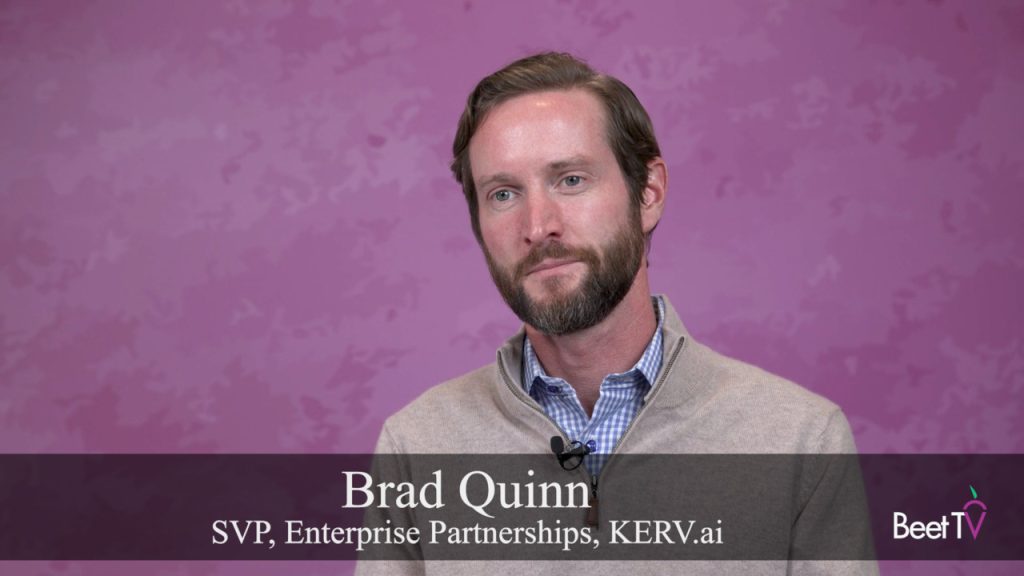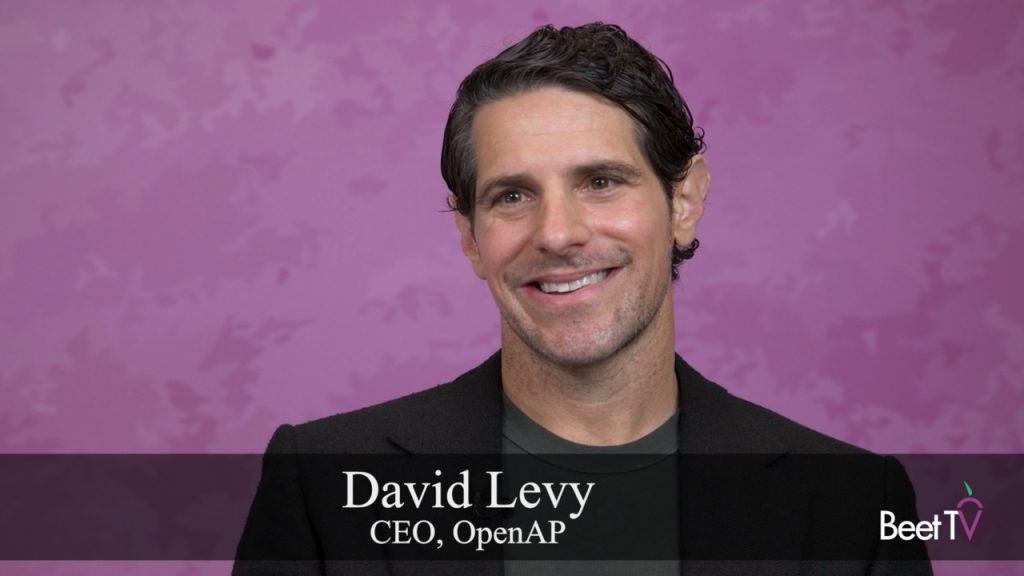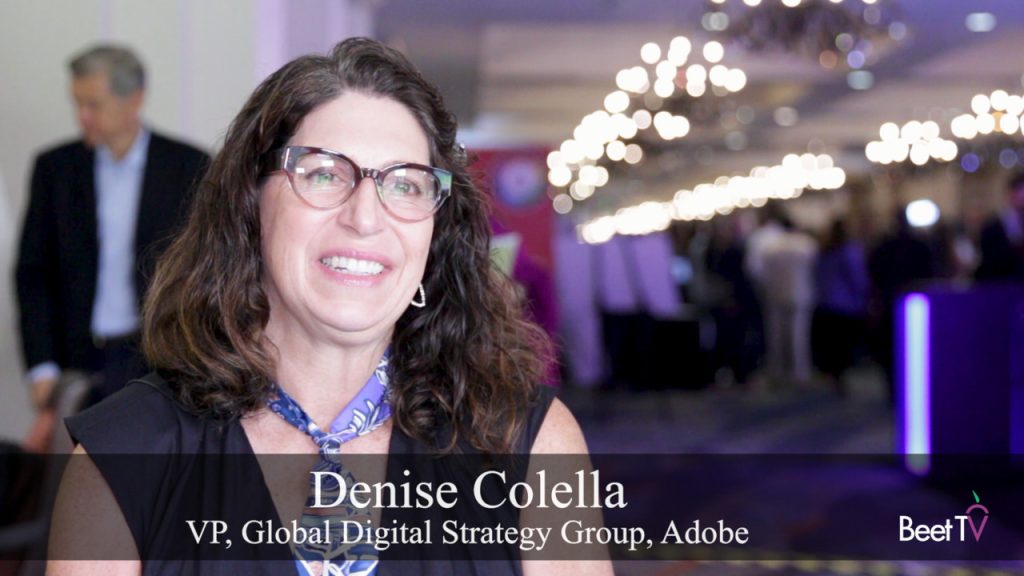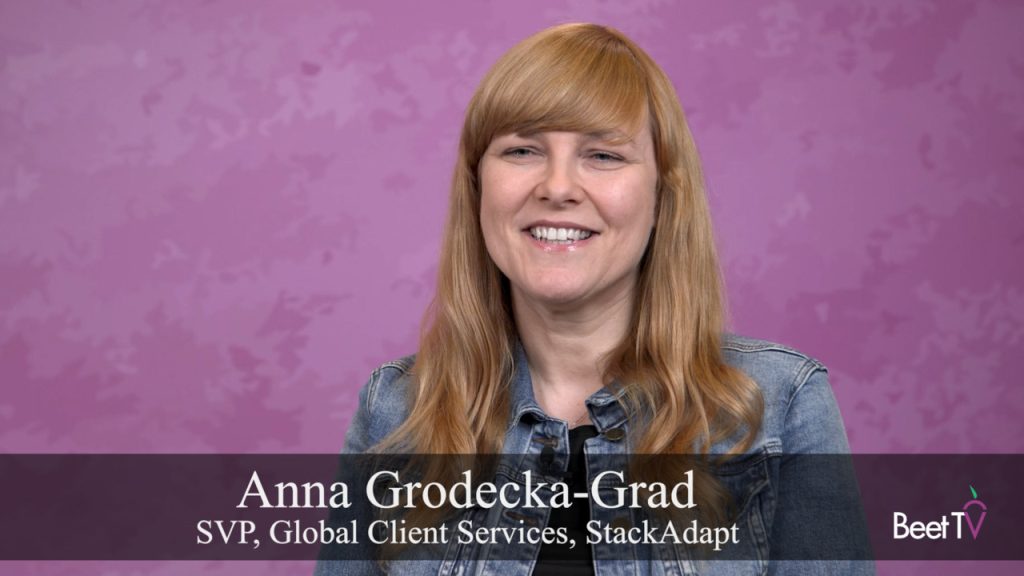Every new breakthrough in understanding television viewer identities creates more complexity for buyers. A case in point is being able to use set-top box data to show how linear TV viewing impacts other media and advertisers’ business outcomes, as underscored by a panel discussion at the recent Beet.TV leadership forum titled Identity in Focus: Understanding the Cross-Screen Consumer in a Fragmented World.
The panel participants were Tim Jenkins, CEO of 4INFO, and Walt Horstman, SVP/GM of Advanced Advertising at TiVo, whose companies have launched a new partnership, along with moderator Ashley J. Swartz, CEO of Furious Corp.
4INFO’s roots date to 2011 when it built a platform that provided proof that ads on mobile devices could drive sales. “TV came along and presented us with a whole new opportunity,” namely the creation of an identity graph tying mobile to other connected devices within households, Jenkins explained.
While Nielsen GRP metrics remain the major TV currency, ever more granular set-top box data are opening up new insights. “The most important thing is having the rights to that data to match it to an identity graph like Tim’s so then we can truly take all of the viewership experiences in linear television and understand how they are impacting other media,” said Horstman.
“I fundamentally think the big news with the identity graph is television is now playing nicely with the other children in the media ecosystem, which has not historically been the case,” Horstman added.
The new partnership between 4INFO and TiVo, according to Jenkins, will allow brands “to be able to use all of this viewership data that’s been captured via traditional linear delivery models…on a one-to-one basis at scale. It’s not a panel, it’s a whole bunch of households that you have actual viewership data on.”
As TV targeting, measurement and attribution continue to evolve, buyers fall into two camps: those still grounded in GRP’s and those using addressable and connected for one-to-one targeting and measurement.
“We try to treat them the same but have to talk to them completely differently,” Jenkins said. “One of the biggest challenges we have is helping people who are traditional digital buyers who know how to buy what we sell work with traditional TV buyers who don’t understand the measurement piece alone.”
“How are you making marketers better, faster stronger in regards to being able to deliver outcomes?” asked Swartz.
“Our fundamental goal has been to make all of this TV viewership data and traditional linear television very accessible to programmatic and digital buyers and DSP’s,” said Horstman. “The uptick is happening. It’s been a big education process.”
Amid comments about “stone age” TV versus more advanced digital media, Horstman said he believes broadcast linear TV still should serve as the foundation for media campaigns given the economics involved. That’s because road-reach TV CPM’s are still very efficient compared to more expensive, highly targeted buys, although a mix of both is appropriate.
“That’s the way that as an industry we should be thinking about this. Understand the economics of what you get across all these different properties and learn how to get the most from them,” said Horstman.
Asked about the increasing complexity that accompanies advancements in TV targeting and attribution, Jenkins said that orchestration is everyone’s responsibility. “At the end of the day, I guess the ultimate responsibility is with the brands. The brands need to really understand what’s available, they have to push their agencies to be able to buy it, be able to explain it and they need to definitely hold platforms accountable to deliver it.”
Swartz wanted to know how, with so many constituencies vying for their place at the table, “How do we make the economics work for everybody?”
Horstman cited the recent report from the 4A’s and the Coalition for Innovative Media Measurement showing the existence of “at least twenty different companies in the TV attribution world. So all this data has now enabled a whole new industry.”
It’s up to the buy-side to look beyond the obvious incentives that sellers have to provide their own means of attribution and be able to attribute value to each link in the chain, according to Horstman.
This video was produced in New York City at Identity in Focus: Understanding the Cross-Screen Consumer in a Fragmented World, a Beet.TV Leadership Forum, presented by 4INFO and hosted by Viacom. For more videos from the series, please visit this page.















![How [M]Platform Helps GroupM Identify Audiences: Tanwir Danish](https://www.beet.tv/wp-content/uploads/2019/03/groupm-tanwir-danish-thumbnail-250x150.jpg)























